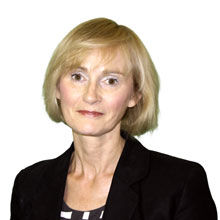
As well as conducting extensive research into RPA and AI, NelsonHall is also chairing international conferences on the subject. In July, we chaired SSON’s second RPA in Shared Services Summit in Chicago, and we will also be chairing SSON’s third RPA in Shared Services Summit in Braselton, Georgia on 1st to 2nd December. In the build-up to the December event we thought we would share some of our insights into rolling out RPA. These topics were the subject of much discussion in Chicago earlier this year and are likely to be the subject of further in-depth discussion in Atlanta (Braselton).
This is the first in a series of blogs presenting key guidelines for organizations embarking on RPA, covering establishing the RPA framework, RPA implementation, support, and management. First up, I take a look at how to prepare for an RPA initiative, including establishing the plans and frameworks needed to lay the foundations for a successful project.
Getting started – communication is key
Essential action items for organizations prior to embarking on their first RPA project are:
- Preparing a communication plan
- Establishing a governance framework
- Establishing a RPA center-of-excellence
- Establishing a framework for allocation of IDs to bots.
Communication is key to ensuring that use of RPA is accepted by both executives and staff alike, with stakeholder management critical. At the enterprise level, the RPA/automation steering committee may involve:
- COOs of the businesses
- Enterprise CIO.
Start with awareness training to get support from departments and C-level executives. Senior leader support is key to adoption. Videos demonstrating RPA are potentially much more effective than written papers at this stage. Important considerations to address with executives include:
- How much control am I going to lose?
- How will use of RPA impact my staff?
- How/how much will my department be charged?
When communicating to staff, remember to:
- Differentiate between value-added and non value-added activity
- Communicate the intention to use RPA as a development opportunity for personnel. Stress that RPA will be used to facilitate growth, to do more with the same number of people, and give people developmental opportunities
- Use the same group of people to prepare all communications, to ensure consistency of messaging.
Establish a central governance process
It is important to establish a strong central governance process to ensure standardization across the enterprise, and to ensure that the enterprise is prioritizing the right opportunities. It is also important that IT is informed of, and represented within, the governance process.
An example of a robotics and automation governance framework established by one organization was to form:
- An enterprise robotics council, responsible for the scope and direction of the program, together with setting targets for efficiency and outcomes
- A business unit governance council, responsible for prioritizing RPA projects across departments and business units
- A RPA technical council, responsible for RPA design standards, best practice guidelines, and principles.
Avoid RPA silos – create a centre of excellence
RPA is a key strategic enabler, so use of RPA needs to be embedded in the organization rather than siloed. Accordingly, the organization should consider establishing a RPA center of excellence, encompassing:
- A centralized RPA & tool technology evaluation group. It is important not to assume that a single RPA tool will be suitable for all purposes and also to recognize that ultimately a wider toolset will be required, encompassing not only RPA technology but also technologies in areas such as OCR, NLP, machine learning, etc.
- A best practice for establishing standards such as naming standards to be applied in RPA across processes and business units
- An automation lead for each tower, to manage the RPA project pipeline and priorities for that tower
- IT liaison personnel.
Establish a bot ID framework
While establishing a framework for allocation of IDs to bots may seem trivial, it has proven not to be so for many organizations where, for example, including ‘virtual workers’ in the HR system has proved insurmountable. In some instances, organizations have resorted to basing bot IDs on the IDs of the bot developer as a short-term fix, but this approach is far from ideal in the long-term.
Organizations should also make centralized decisions about bot license procurement, and here the IT department which has experience in software selection and purchasing should be involved. In particular, the IT department may be able to play a substantial role in RPA software procurement/negotiation.
Find out more at the SSON RPA in Shared Services Summit, 1st to 2nd December
NelsonHall will be chairing the third SSON RPA in Shared Services Summit in Braselton, Georgia on 1st to 2nd December, and will share further insights into RPA, including hand-outs of our RPA Operating Model Guidelines. You can register for the summit here.
Also, if you would like to find out more about NelsonHall’s extensive program of RPA & AI research, and get involved, please contact Guy Saunders.
Plus, buy-side organizations can get involved with NelsonHall’s Buyer Intelligence Group (BIG), a buy-side only community which runs regular webinars on sourcing topics, including the impact of RPA. The next RPA webinar will be held in November: to find out more, contact Matthaus Davies.
In the second blog in this series, I will look at RPA need assessment and opportunity identification prior to project deployment.



